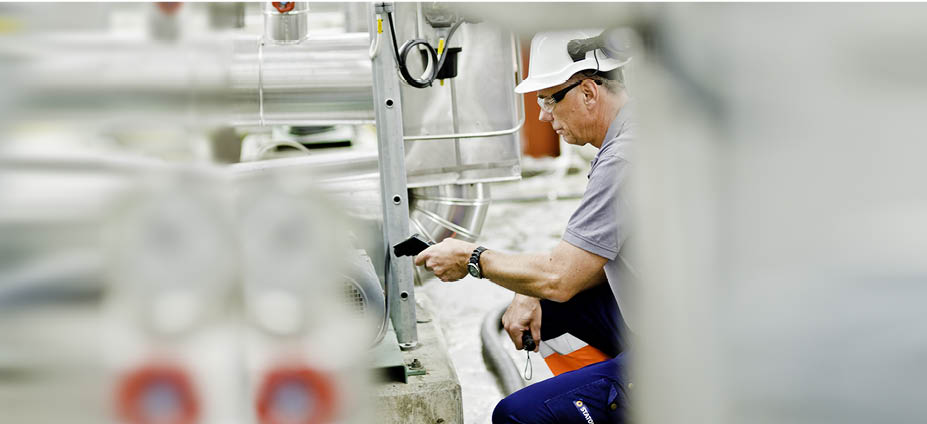Securing lubrication maintenance – the tips that show the way
These are the tips to bring good order to your lubrication maintenance. They reduce the risk of downtime and unplanned stoppages, and are also fundamental to a working preventive maintenance system.

The first tip relates to the importance of good order, both in handling and storing the lubricants. Anything that’s necessary should be easily accessible and have a set place.
“This will make lubrication maintenance safer and cleaner. It also makes sure that maintenance is not person-dependent, since it makes it easy for everyone to do the right thing,” explains Robert Wikman, Application Engineer at FUCHS Lubricants. Cleaner handling of lubricants also keeps dirt and abrasive particles away from the machinery. It reduces the risk of operational disruptions.
Wikman sums good order up in five points:
- have a dedicated lubricant store
- label equipment and products so that everyone knows what’s what
- have a separate gun for each type of grease and a separate can for each oil
- make sure that oil refill containers are clean and properly sealed to keep dust and dirt out
- label all lubrication points
Clean and tidy – greater well-being, fewer mistakes
Regular cleaning and tidying is just as important as keeping things in good order generally. A clean, tidy workplace increases well-being while also making the working environment safer.
“A clean, well-organised store also reduces the risk of errors and incorrect mixtures,” stresses Wikman. “Also, there are no contaminated lubricants, which can increase wear and lead to disruptions.”
Wikman’s pointers on cleanliness and tidiness are:
- prevent spillage using absorption materials and oil collectors
- wipe up spillages and clean around lubrication points and in the oil store
- clean and tidy a little every day, and do a main clean once a week
- set a standard, a checklist that everyone follows
Supporting procedures – to assure quality and improvement
To really raise the level of lubrication maintenance, it’s also important to establish procedures and decide where, when and how things should be done.
“Ask your lubricant supplier for help, as they know what’s needed to establish day-to-day procedures that really work,” says Robert Wikman. Also, document the procedures to establish a historical record of what has been done. This makes life easier in the event of sudden problems, but also in work on continuous improvements.
“I like to sum up the procedure process in three points,” says Wikman. “First of all, write to-do lists. They provide support and continuity, e.g. in oil changes, analyses, machine care and cleaning.
“It’s also important to have control procedures to ensure that labelling, cleaning and good order are well-established,” he continues. “And thirdly, include the measures in standards in maintenance systems or Excel so they are easy to find, follow and update.” You can find more tips on how to secure lubrication maintenance here.
